“Mountains should be climbed with as little effort as possible and without desire. The reality of your own nature should determine the speed. If you become restless, speed up. If you become winded, slow down. You climb the mountain in an equilibrium between restlessness and exhaustion. Then, when you’re no longer thinking ahead, each footstep isn’t just a means to an end but a unique event in itself.” ~ Robert Pirsig
In this week’s Dirty Dozen [CHART PACK] we again reiterate the simple reasons to stay long the trend, we highlight some improving tailwinds while noting some risks worth watching, cover a bull signal in healthcare, a long setup in USDCNH, a Mexican housing play, and more…
1. Keep It Simple Stupid (KISS)… as we discussed last week we’re still seeing a lot of bears trying to fight this trend. While, yes, there are some growing warning signs, you don’t trade warning signs, you trade the trape. And the tape is still trending up.
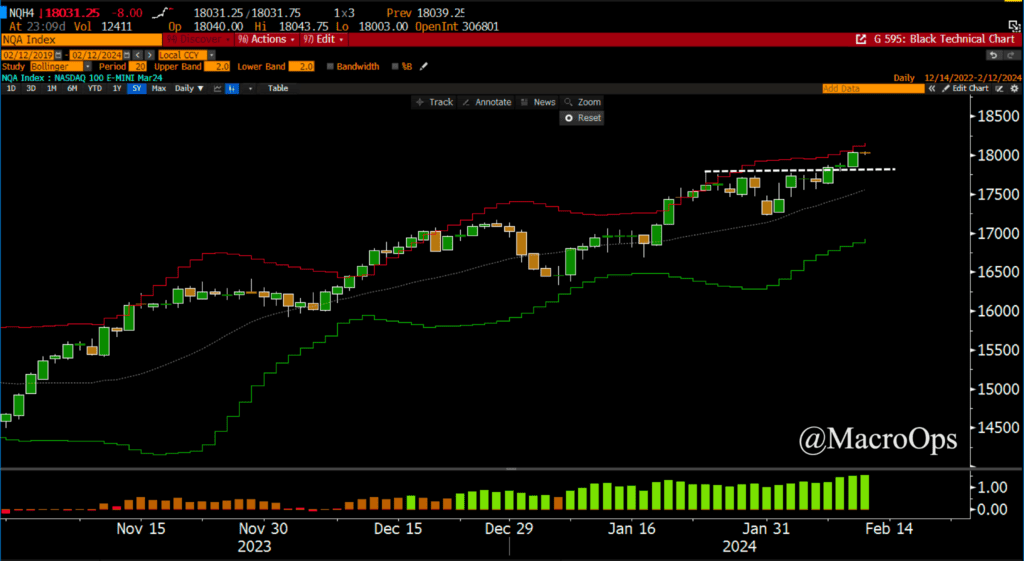
2. Some positive developments last week were improvements in the market internals where we’d been seeing some developing weaknesses.
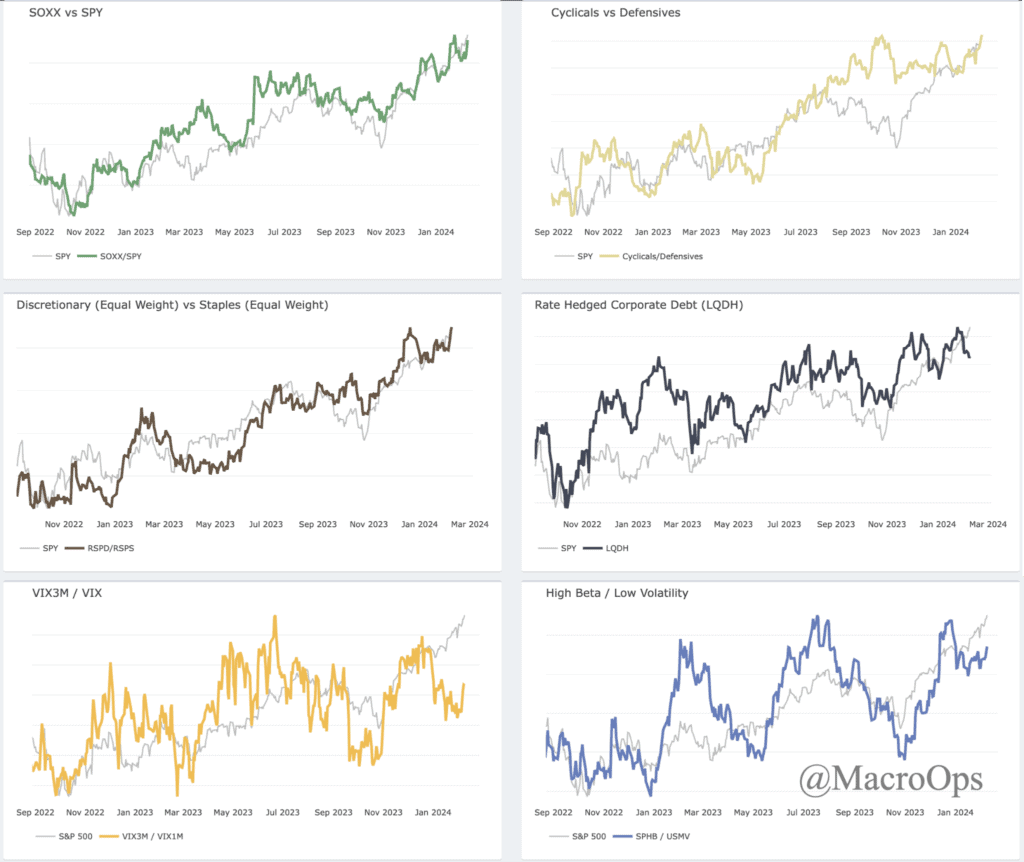
3. Tellingly, large specs increased their short positions in the SPX last week while reducing their longs in the Qs. This is not the type of frenzied optimism you see going into a large top and bodes well for the sustainability of the current trend.
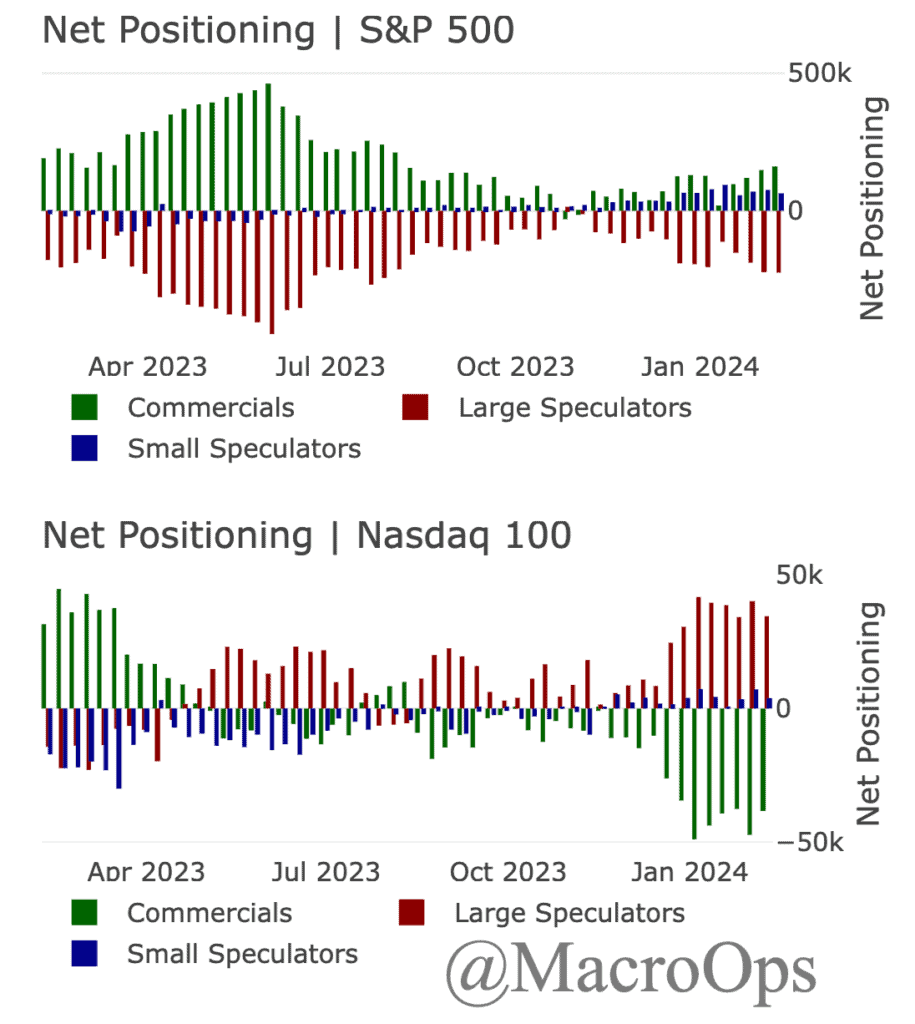
4. Another positive sign is the large fall in our yield leads over the past month. This suggests there’s a growing headwind to the recent pop in yields, which is also supportive of equities here.
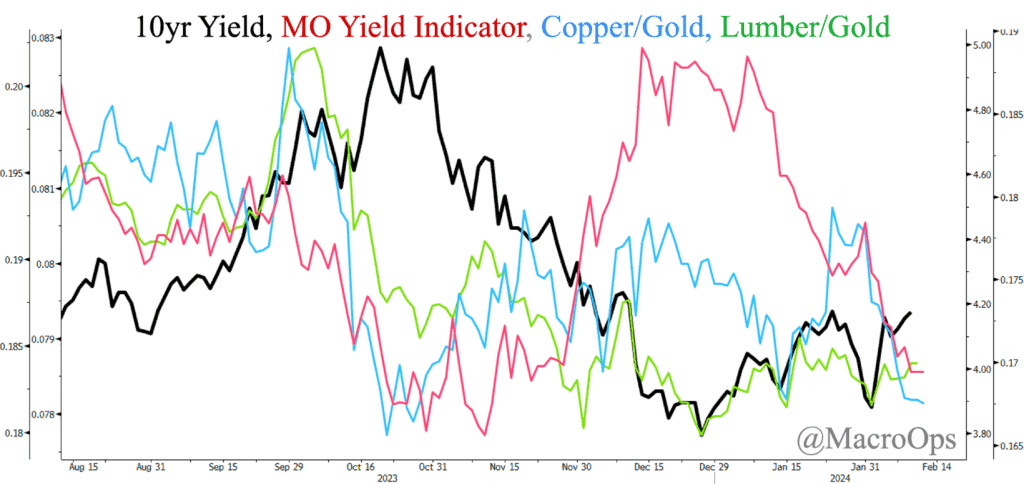
5. We’re staying nimble but our current base case is that we see markets run into the end of the month before entering a corrective period, which would also be in line with election year seasonality. Perhaps a continued run into the end of Feb will be enough to convert the more reluctant bears and trigger a proper BofA Bull/Bear sell signal.
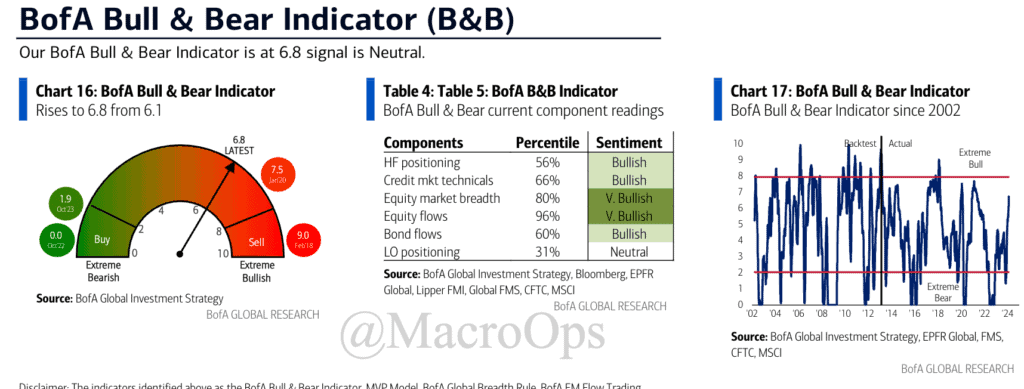
6. But, as SentimenTrader recently highlighted, there are some red flags for the intermediate-term trend. They write:
“Among other technical warning signs that have been triggered are the Hindenburg Omen and Titanic Syndrome.
If you can get past the hyperbolic names, they provide helpful insight into what’s happening below the surface of the major stock market indexes. When these signals trigger, they highlight conditions when not everything is in gear.
During the past three weeks, the two indicators have triggered a combined eight signals. That’s the most since December 2021. We can see from the chart below that when eight or more signals were triggered, the Nasdaq Composite’s annualized return was a horrid -29.3%.”

7. And:
“The table below takes a signal-based approach. It shows returns for the Composite after any date when the three-week sum of combined warnings cycled from zero to eight or more. Overall, risk in the index was higher than reward, which is not a condition we see often.”
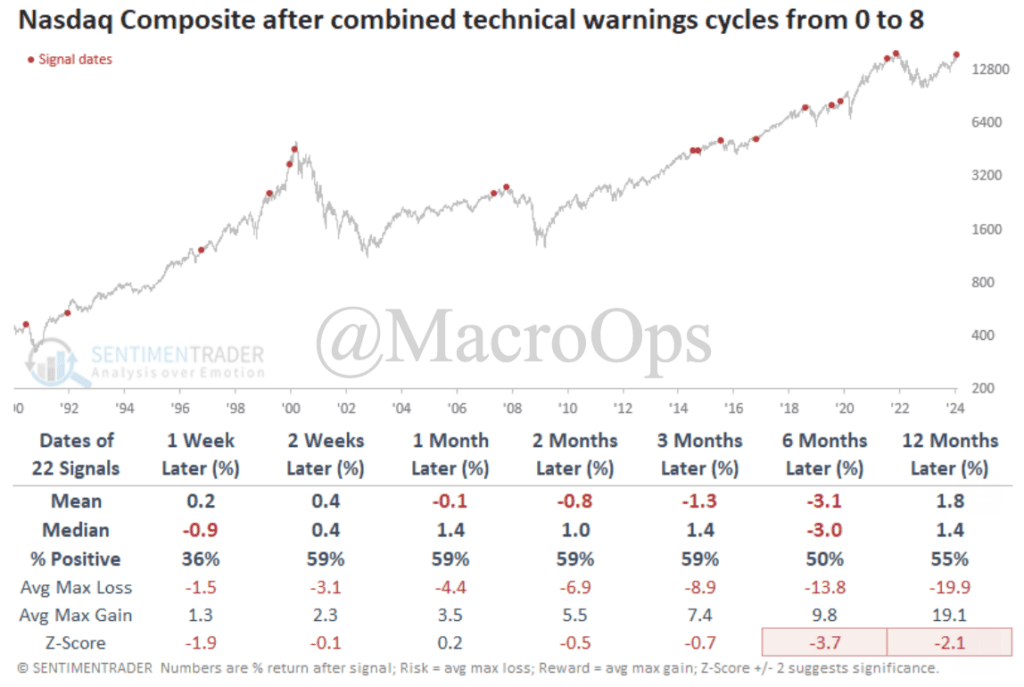
8. Health Care is making a new ATH after not making one for over a year. 80% of the time the Health Care sector is positive a year later with a median return of +20%. This is the S&P 500’s third-largest sector (via Octavio Robles, MO Quant).
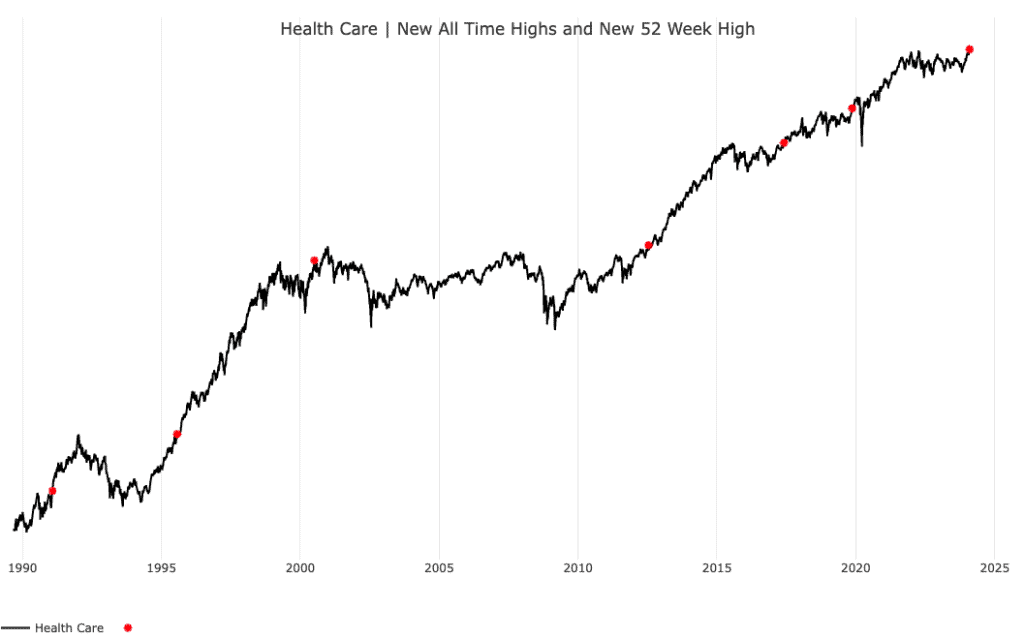

9. Last week we shared our preference for long USD trades here and noted the short setup in GBPUSD (which we still like). This week we’re also looking to get long USDCNH on a break above recent highs (white line).
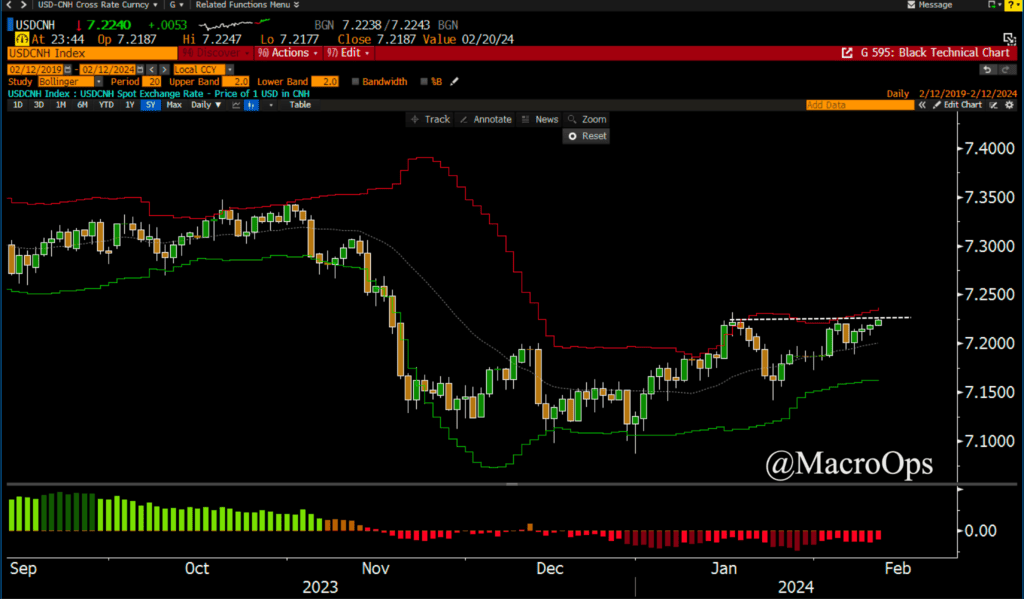
10. China has kept the RMB artificially propped up and USDCNH would trade significantly higher if it weren’t for the PBoC’s aggressive intervention. But with the US in an election year and China likely to be a bipartisan punching bag, there are pretty good odds we see the Chinese raise the implied ceiling on USDCNH. This would be deflationary for the rest of the world, especially since Chinese export prices are already falling at their fastest pace since 08’.
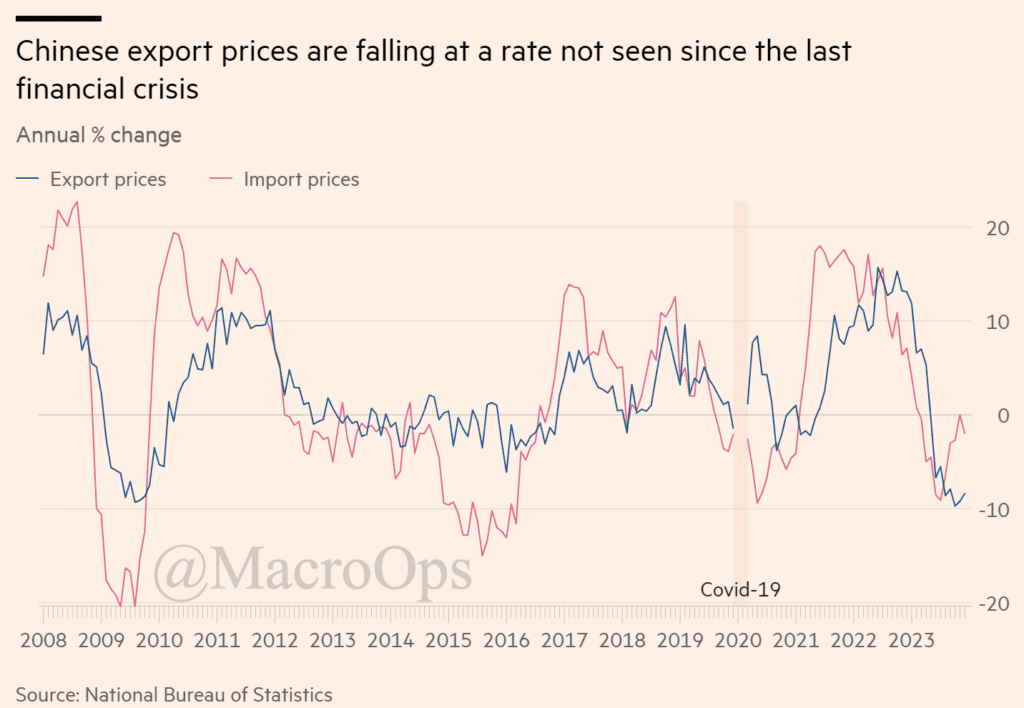
11. From Brandon Beylo (Macro Ops Value):
Cheap Mexican Housing Play (Corpovael S.A.B)
We’re bullish on Mexico over the next 3-5 years. One way to express that theme is through homebuilder stocks. Mexico remains structurally short houses while re-shoring growth accelerates, which increases demand.
Check out Corpovael (CADUA). The stock just broke out of its three-year base and it’s trading at its cheapest valuation in its 10-year history, not to mention it’s one of the cheapest homebuilding stocks globally (via Koyfin).
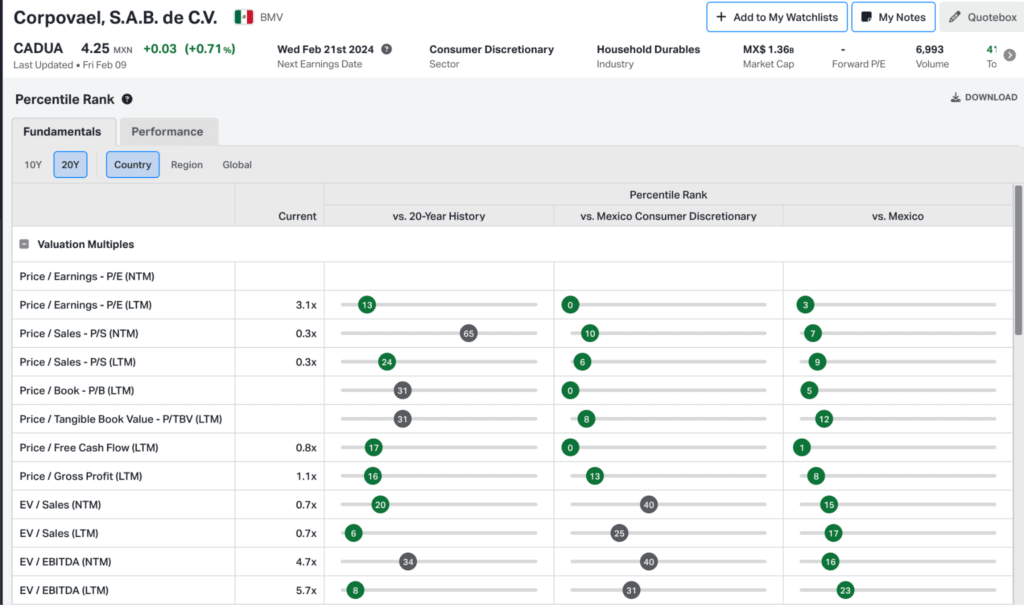
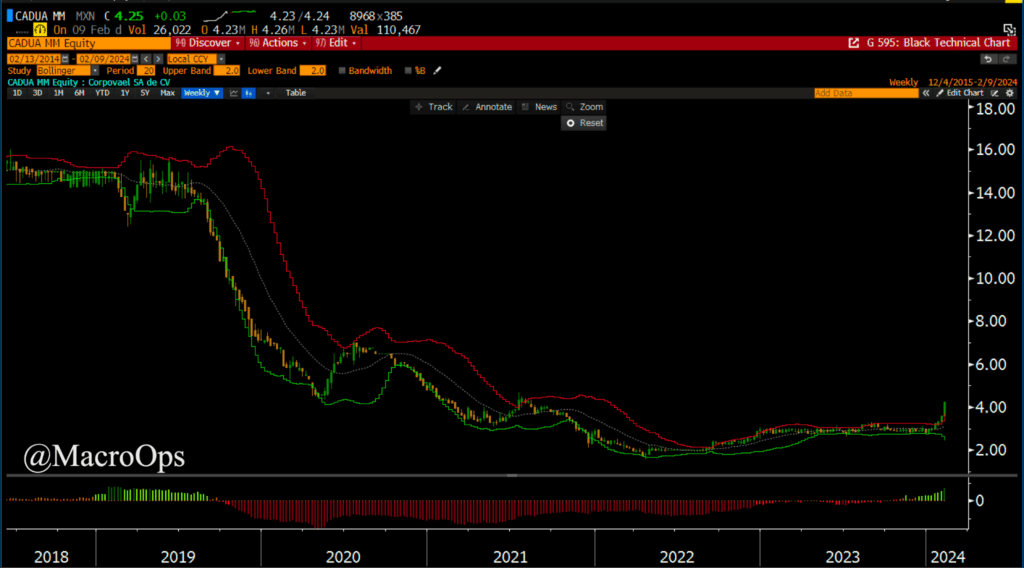
12. We talked about the budding bullish technicals in tin miner Alphamin (AFM:TSX) the other week, as well as the fundamental reasons for being very bullish the tin market (link here). Metals X Limited (MLX:ASX) also looks to be on the brink of breaking out from a major compression regime (chart below is a weekly).
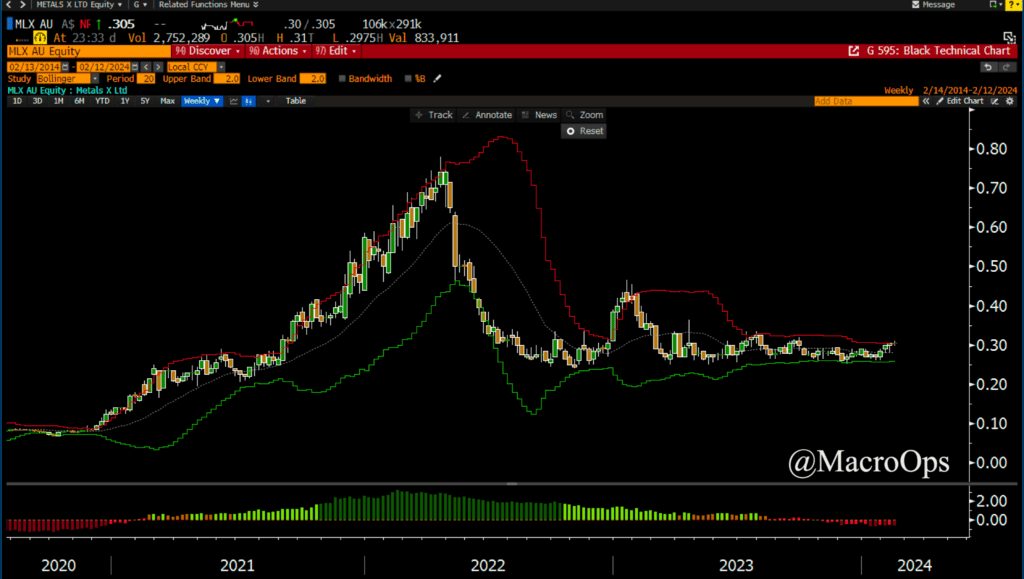
Thanks for reading.










